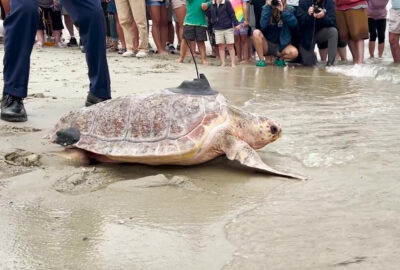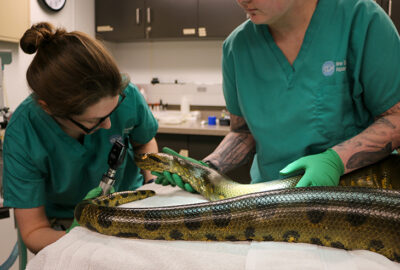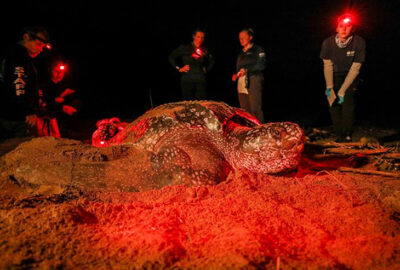Sea Turtle Succumbs to Plastics and Entanglement
New England Aquarium scientific staff have determined that a 420-pound leatherback sea turtle died in part from ingesting plastic as well as suffering from a major entanglement injury
By New England Aquarium on Monday, November 05, 2018

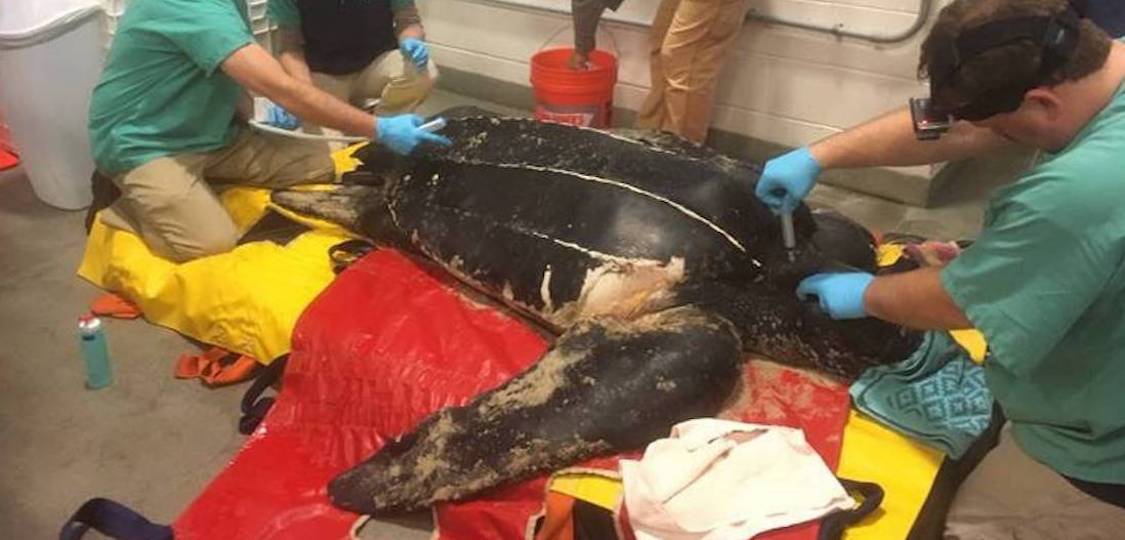
The turtle had stranded on a Cape Cod beach last week with an 11-inch by 5-inch piece of plastic (warning: graphic photo below) in its gut and extensive injuries from an entanglement.
This species of giant, black, soft-shelled sea turtle frequents New England waters in the summer and autumn to feed on sea jellies (jellyfish). The endangered sea turtles suffer many deaths in the region each year from entanglements in vertical ropes, strikes from recreational boats, and eating plastics. This turtle’s demise was directly tied to two of those three threats.
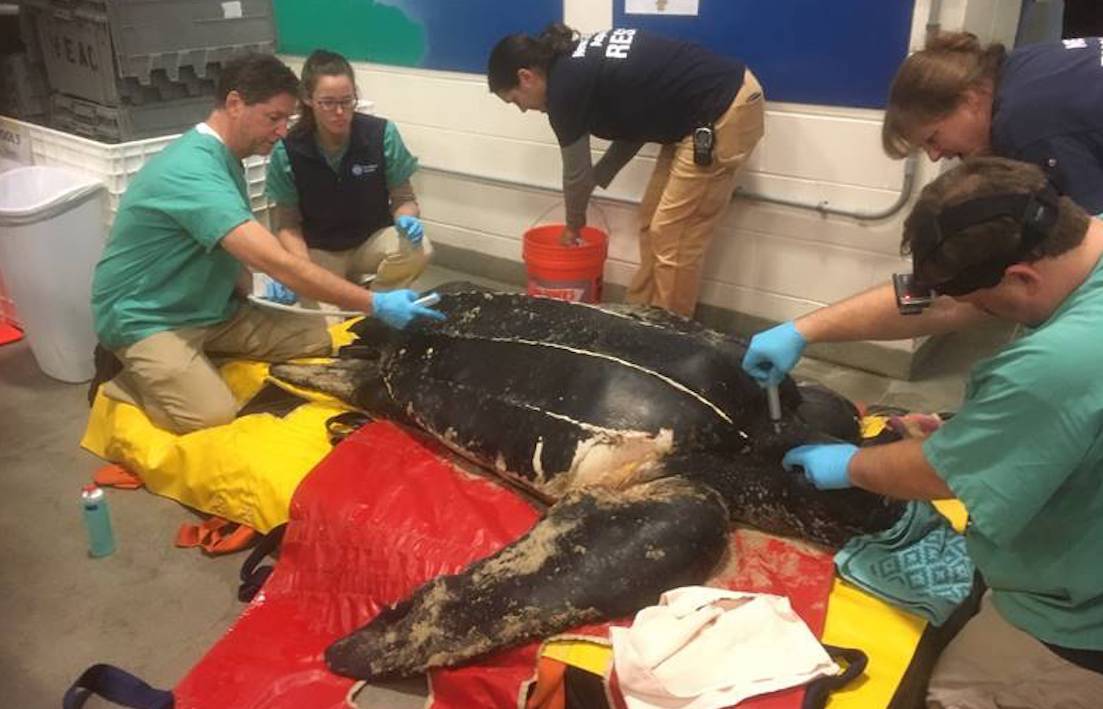
Dr. Kara Dodge, a sea turtle ecologist with the Aquarium’s Anderson Cabot Center for Ocean Life, stated, “These turtles can experience multiple impacts like plastics and entanglement simultaneously in our region.”
Leatherbacks and other sea turtle species often mistake undulating plastic materials in the water for sea jellies. Ironically, Dr. Dodge had posted a blog earlier in the week before this stranding about the impact of plastics on leatherbacks. It features some amazing shell-mounted video of a leatherback feeding on sea jellies. Dodge had written the blog this past week to mark the launch of a new phase of plastics reduction and awareness campaign being promoted by more than 20 U.S. aquariums, including the New England Aquarium.
The plastics ingestion was discovered during the sea turtle’s necropsy, but the entanglement injury was clearly evident upon the female’s arrival at the New England Aquarium’s sea turtle hospital in Quincy, MA. The turtle had a major, gaping wound where its huge, right front flipper attached to the shell. The tissue in the area was clearly infected. To veteran staff, it was an all-too-familiar entanglement injury caused by a wrap of rope around the flipper when sea turtles swim into vertical ropes that go down to fixed fishing gear or boat moorings. Despite weighing 420 pounds, the huge leatherback was clearly underweight. Its body temperature at intake was 47 degrees, its respiration were few and irregular and its pulse was not detectable. A team of Aquarium veterinarians and biologists diligently worked on the turtle until the next morning before giving up their efforts.
Warning: Graphic Image Below
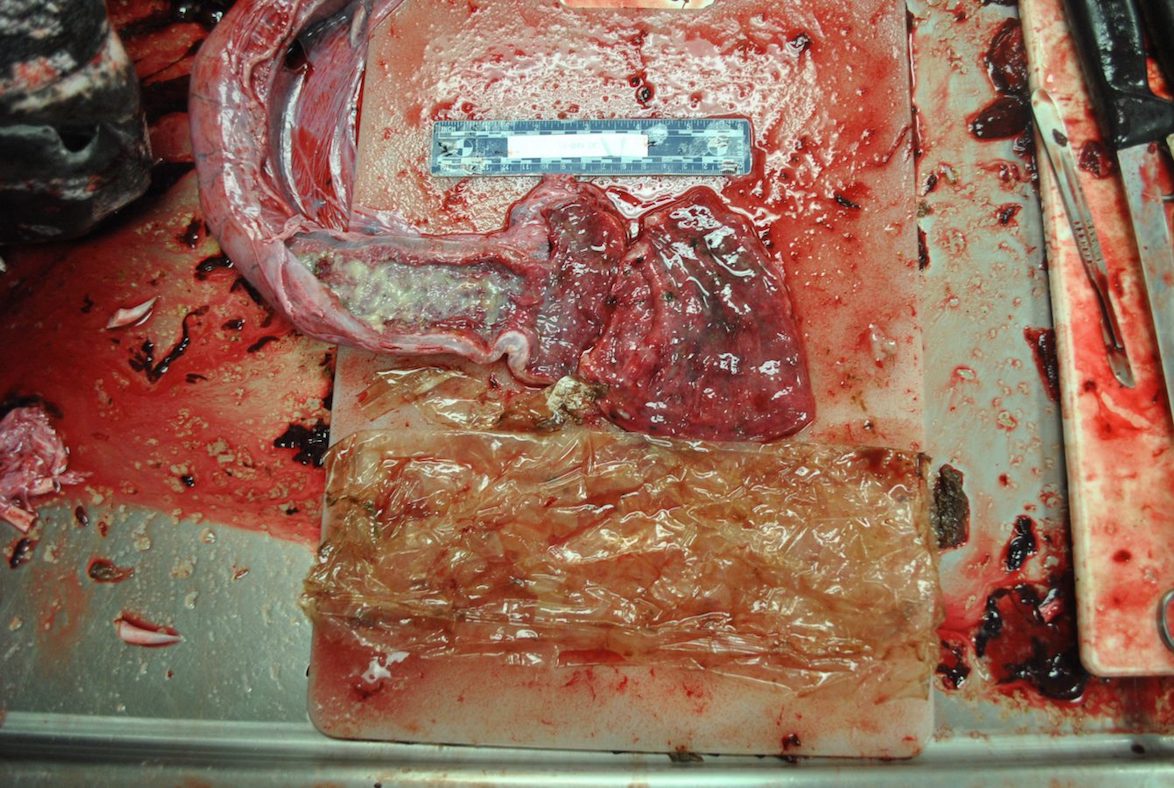
New England Aquarium scientists are conducting research and partnering with other stakeholders to design more turtle- and whale-friendly fishing gear in the short term while helping to push efforts that could lead to rope-less fishing. The Aquarium has recently hired Dr. Dodge, a leatherback researcher, to lead studies to better understand how sea turtles use New England waters.
Conservation Context
NOAA Fisheries is in the process of evaluating whether the “endangered” status of leatherbacks should be lowered to “threatened.” New England Aquarium researchers are concerned that the significant and consistent adult mortality off the region’s coasts is fully and carefully considered. Since 2005, 220 endangered leatherbacks have been entangled in vertical marine ropes off Massachusetts. There have been an additional 12 in 2018. These are the known entanglements.
Dr. Charlies Innis, the Aquarium’s chief veterinarian and an expert in sea turtle medicine, stated, “The death of this leatherback is a good example of how sea turtles may survive entanglements but become so compromised that they later succumb. We cannot assume that all sea turtles released from entanglements will survive.”
Each autumn, the Aquarium re-warms, rehabilitates, and later releases hundreds of endangered Kemp’s ridley sea turtles that strand in Cape Cod Bay due to hypothermia.

